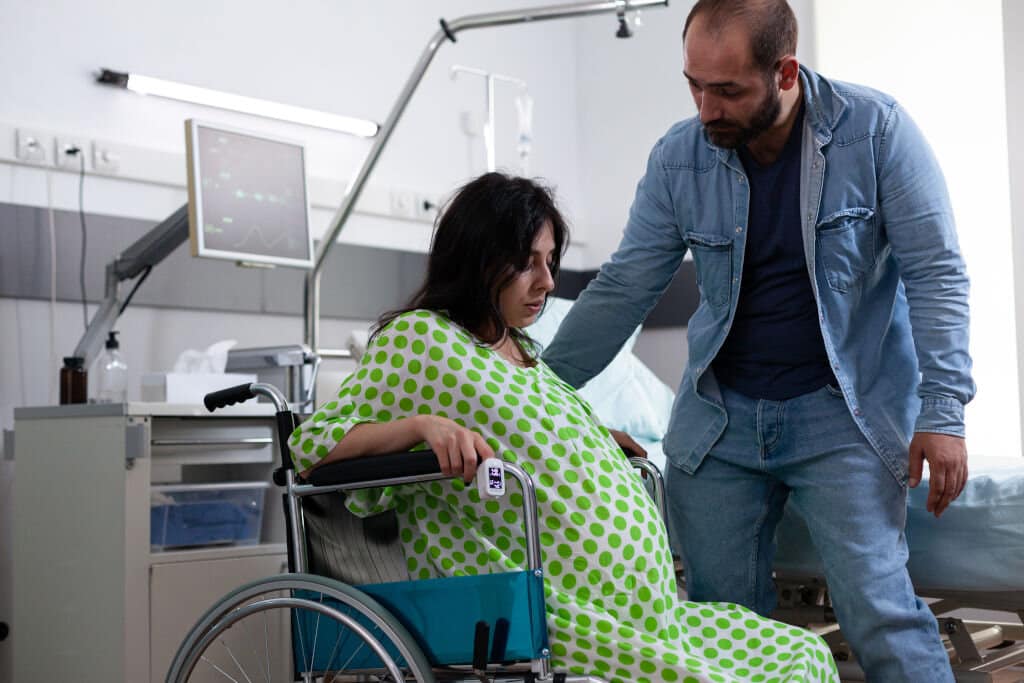One of the most painful statements a plaintiff may hear in a preeclampsia malpractice lawsuit is that “the opinion of the plaintiff’s medical expert regarding proximate cause lacks evidentiary foundation.” Thus, failing to meet the burden of production of substantial evidence.
Usually, what follows this court proclamation is the rendering of summary judgment for the defendants or another judicial ruling in favor of the defendants.
By nature, preeclampsia medical malpractice cases can be challenging to prove. It’s harder if the expert witness lacks the resources to present evidence for establishing a proximate cause before the court.
With medical animation, however, it is easier to bridge the gap between providing medical explanations and the jury understanding what is contained in the expert’s testimony.
Consequently, preeclampsia cases can be enhanced remarkably with the introduction of medical animation.
What is Preeclampsia?
Preeclampsia is a condition without precise cause. It is characterized by high blood pressure, protein in the urine, and swelling in the legs, feet, and hands during pregnancy. It can range from mild to severe.
Preeclampsia typically develops in pregnant women whose blood pressure had previously been within the normal range after 20 weeks of pregnancy.
If untreated, preeclampsia can result in significant, potentially deadly problems for the mother and the unborn child. This can include sepsis, organ failure, cardiac arrest, and stillborn.
Before birth, preeclampsia is treated with close monitoring, blood pressure-lowering medicines, and complication management.
Even though preeclampsia is potentially harmful to both the mother and the baby, the condition can be managed so that no harm comes to the duo.
Therefore, a doctor holds a duty of care to watch out for the symptoms of preeclampsia and diagnose it early. They also have to manage the condition and respond promptly whenever an irregularity is complained of or noticed,
If a doctor fails the duty of care, they may be held liable depending on the facts of the case.
In the case of preeclampsia, medical animation can play a massive role in illustrating medical negligence as a proximate cause of any harm obtained thereby.

Can You Sue For Preeclampsia Medical Malpractices?
A preeclampsia malpractice case may arise in several ways. The first resides in the misdiagnosis or delayed diagnosis of the condition.
The doctor providing care for the mother is supposed to watch out for the symptoms. They must ensure that she stays healthy during pregnancy and after.
Some symptoms to look out for include a persistent headache, upper abdominal pain, unusual swelling in the hands and face, sudden weight gain, nausea or vomiting, shortness of breath, and changes in your vision, such as blurry vision or seeing spots.
Consequently, if the doctor fails to take note of these symptoms, they can be liable for preeclampsia medical malpractice.
Also, the doctor can take note of specific risk factors to ensure that the plaintiff does not suffer preeclampsia without adequate care.
Some risk factors to check out for are multiple pregnancies, first pregnancy, presence of preeclampsia in the previous pregnancy, family history, mother over 40 years, and history of high blood.
When a doctor fails to note all of these, there can be cause for a malpractice case.
It must be noted that one of the ways to manage preeclampsia is to induce labor to deliver the baby safely and assist the mother in recovery.
If the doctor delays inducing labor or induce it too early, there may be cause for medical malpractice.
Case Reference 1
A case in point is that of Estate of McCall v. US.
In this case, Ms. McCall underwent healthy and normal antenatal care at the United States air force clinic. She did this until the last trimester, when some test results revealed severe preeclampsia. It was so intense that there was an immediate need for induced labor.
After this need was recognized, action was not taken promptly. This left the mother to enter a critical phase of the condition—shock and cardiac arrest. The woman passed away due to negligent treatment.
Apart from induced labor, another necessary treatment of preeclampsia is constantly monitoring the mother and baby’s current state. This will help detect any irregularity. If this is not done, there may be medical malpractice cases.
Case Reference 2
An example can be seen in the case of Creekmore v. Maryview Hosp. In this case, an instance of complete neglect of the patient and failure to monitor the health of the mother and baby is seen.
The plaintiff had delivered her baby via cesarean section due to a history of severe preeclampsia. What was left was for her health and stability to be monitored and checked every 10 minutes by a nurse. The monitoring will ensure her blood pressure stays stable. On this note, the defendant failed notoriously.
The nurse did not take appropriate notice of any changes in the plaintiff’s condition. Hence, her health deteriorated steadily until she went into hypovolemic shock.
She suffered a stroke that caused her physical and cognitive impairments that continue to impact her daily. Judgments were later entered in her favor for damages of $900,000.
Negligent treatment can also harm the baby. An example is seen in the case of Ryan v. Brown. After severe preeclampsia was detected with a risk of placental abruption, the care required was delayed for a few hours. This delay caused a stillbirth of the baby.
In disheartening cases like this, medical animation can help portray malpractice in court.

Proving Preeclampsia Malpractices Using Medical Animation in Court
In the United States, there are different pregnancy complications that can arise, and one of them is preeclampsia. The US Department of Health and Human Services reported that only about 3.4% of pregnant women suffered from preeclampsia.
Considering the low number, one can sweep this condition under the carpet and ignore the possibility of it happening. However, that will be a colossal mistake.
Preeclampsia may seem relatively uncommon among pregnant women. However, its unpopularity does not erase the risks that accompany it. Such risks include stroke, major organ failures, stillbirth, and death of the mother.
A contradicting report from the Centers for Disease Control and Prevention provided that preeclampsia happens in about 1 in 25 pregnancies in the United States. This makes some women develop seizures known as eclampsia. Eclampsia is a medical emergency.
From the preceding, it is clear that the rate at which this condition affects pregnant women should not stop doctors from watching out for the signs in expecting mothers and ensuring they stay healthy during and after the pregnancy.
Therefore, a doctor’s failure to properly diagnose or manage a pregnant woman suffering from preeclampsia can lead to a lawsuit.
Preeclampsia Medical Animation
In a preeclampsia lawsuit, the defendant may want to claim that their actions or inaction would not have depreciated or improved the plaintiff’s condition anyway because of the severity of the situation.
The best way to refute this argument is with solid, substantiating evidence from a qualified expert witness.
The plaintiff must be able to sweep off this argument with scientific facts and data on the condition in general and the plaintiff’s specific case in particular.
In providing this substantial evidence, medical animation will not only improve the jurors’ understanding but also enlighten them about the proximate liability of the defendants in the case.
As a result, the medical animation may show the effect of preeclampsia in the plaintiff’s body before full harm occurs. The animation will then show how the doctors’ swift response and recovery process commencement using the standard process would have improved the situation.
The medical animation can then go on to show the mistreatment. This can be in terms of wrongful or delayed treatment and how it directly impacts the health of the mother and the baby.
With medical animation in preeclampsia cases, there is settledness attached to clarity, understanding, and the ability of the jurors to empathize with the injury suffered by the mother and the child.
On the part of the baby, there may be a lack of oxygen and nutrients, preterm birth, congenital disabilities, and stillbirth.
All of these harms that can arise from preeclampsia can be illustrated in the medical animation. Hence, helping the jury to have a visual picture of the damage that has been caused. This way, they can get an insider’s view of the injuries suffered and how they helped in the long run.
Conclusion
A medical animation for a case of this caliber must accurately and fairly demonstrate the proximate cause of the harm. To achieve this, consulting with a remarkable medical animation company is essential.
Fox-AE is a legal animation company dedicated to creating lifelike medical illustrations of medical cases, including any form of malpractice.
We create medical animation that explains how a procedure is carried out, the anatomy of a particular organ and how it functions, and the cause and effects of medical conditions.
With us, there is a team of dedicated experts committed to ensuring that clients win their cases using medical animations that resolve complexities.





